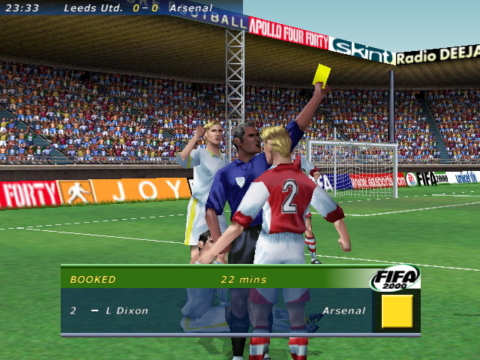
FIFA 2000
Written by: Rik
Date posted: April 23, 2019
- Genre: Sport
- Developed by: Electronic Arts
- Published by: Electronic Arts
- Year released: 1999
- Our score: 5
Without wanting to over-generalise, the last 20 years or so of FIFA can roughly be summarised thus: during the 00s – not as good as Pro Evolution Soccer; during the 10s – better than Pro Evolution Soccer (supposedly). Before all of that, there was a short period in the late 90s during which FIFA flirted with the prospect of being the premier footy title, hopes that arguably came to an end with this game, in combination with some other odd decisions made by EA at the time.
In an ideal world, it could be argued, I would methodically work through all of the FIFA games and tell you about each of them in some detail, but a) I can’t get the ones I’m talking about to work on my current setup; and b) even I, resident sports expert at the world famous gaming site A Force for Good and strong proponent of talking at length about long-forgotten football games, don’t actually think it would be all that interesting to do that, even if everything did work in modern Windows just like it was still 1998. (But we can do a bit of a recap, with evidence and sources and all that – see A tale of FIFA in the late 90s for a bit more history and context).
Anyway: FIFA 2000. A couple of things about this game have always marked it out to me as an interesting anomaly even if (spoiler alert) it doesn’t provide a particularly memorable or realistic game of computer football. Firstly, there are the visuals, which are oddly stylised in a way that seems to mark a departure from the series’ usual aim towards authenticity. Kits are accurate to a point, but the shirts seem slightly buttoned-up and old-fashioned, while player models seem rather spindly and facially look rather weird, with slicked back hairstyles and occasionally striking facial hair. The whole thing looks rather like a cartoon about a fictional league in the 50s rather than a super-relevant footy game.
I have two possible and not mutually exclusive theories – and they are just theories – about this approach. One: from a certain point in time, building the next FIFA game became an incremental process, with bits added in one year and built upon the next. In this sense, 2000’s graphics represent the next step of evolution away from the bulky models of FIFAs 97-99, but without the scanned faces etc which came in later years. Each FIFA game should be different enough from the last without doing anything too dangerous: if something didn’t work last time, change it, and add some new features that make this one distinctive. Otherwise, it’s a constant process of working towards next year’s game and the one after that. Pull lever A, adjust slider B, do what we can for the year and crank out new games in accordance with the release schedule.
Two: around this time, EA was experimenting with another football series, running in parallel with FIFA and their tournament spinoff games: The FA Premier League STARS. To distinguish it from FIFA, STARS would have to provide something extra, an additional layer of authenticity. So we would get proper stadiums, sponsor logos, and additional Premier League fluff, but in STARS only. In FIFA, it’s back to plain kits and generic grounds. Just as only the official World Cup game can provide the real tournament experience, only the official Premier League game can provide the real Premier League experience. (Unfortunately, though, STARS wasn’t actually as good as FIFA, so you had to buy one for the kits and one for the game – if you didn’t have a PlayStation and a copy of ISS Pro Evolution, that is).
Now back to the other thing that’s interesting about FIFA 2000: Robbie Williams. Previous FIFAs had successfully harnessed licensed pop music for use in their menus and ad campaigns, EA went one better (or worse) for this edition, by not only getting an ‘exclusive’ Robbie track as the title music (It’s Only Us, later released in the UK on a double A-side with She’s The One, which meant that it wasn’t really an exclusive after all, seeing as you could buy it and it was played on the radio) but also signing him up to do motion capture duties as well. So all of FIFA 2000‘s goal celebrations, and arguments with referees, and between players, are performed not by a professional footballer but by one of the blokes out of Take That, in exchange for his favourite team Port Vale being included in the game (and, presumably, some money).
And so, to the game itself. New innovations include the ability to shield the ball from opponents while in possession, and a ‘pass potential’ indicator, which has a traffic light system of colours for whether the nearest pass is ‘on’ or not. Features that seem to have disappeared since previous iterations, include the off-the-ball attacking strategies (e.g. tell your full-back to make a run down the wing) that could be activated at will, although the defensive ones – team pressing and offside trap – remain.
Success is achieved through a fast-paced kick-and-rush approach, with a continental passing game beyond the wit of most players, and any attempt to find a team-mate is rarely undertaken with any degree of certainty, regardless of what the ‘pass potential’ meter says (frequently it will be necessary to make a pass when this meter is marked red for danger, so it has little use in practice). Meanwhile, a heavy reliance on tricks (known as skill moves), especially the unlikely 360-degree turn, which can be used repeatedly to skirt around opponents, is necessary to retain possession and get through on goal. Another reliable method of scoring, at least on the second-hardest of the three difficulty levels, is to throw crosses into the box and watch as your forwards head the ball into the goal with unerring accuracy.
The main thing that struck me while playing is how the notion that FIFA 2000 was once considered a sophisticated modern footy title, far superior to the ping-pong efforts of 90s football kings (one which, I hasten to add, I went along with) seems rather ridiculous now. Dribbling, passing and shooting are all heavily assisted, while the notion that having to simply press a button to execute a complicated trick or double-tap another perform a volley or overhead kick was in any way complicated seems equally fanciful. And tinkering with personnel or formations, the latter of which you can do on-the-fly using the in-game management (IGM) feature, is largely unnecessary.
Challenges are presented by the occasionally erratic behaviour of the goalkeepers, who like to let the ball trickle past them for no reason before diving on it, or decide for some reason and without warning to play the ball with their feet instead of pick it up. Set pieces, including goal kicks, are also a bit weird, abandoning what most would consider the logical move of giving the player the same or similar options during a dead-ball situation as they would have if the ball were in play (i.e. the same buttons do the same things regardless) in favour of a choice between hitting one of a maximum of three players automatically with the press of a button, or attempting (most likely unsuccessfully) a manual kick with the use of a gauge and arrow.
You can also crank the difficulty up to the highest level, World Class, which takes an easy game and makes it more annoying, as success is still possible, but you have to repeatedly use a combination of tricks and shielding to retain possession, while opponents repeatedly get away with ridiculous sliding fouls, no matter how much you turn up the referee strictness, and have an uncanny ability to score from corners or produce a winner just when they need it.
The atmosphere is slightly muted: the crowd sounds more like a Sunday League game than a big match, although it is worth noting the animated crowd effects, which were impressive for the time. Commentary comes from John Motson and Mark Lawrenson, with introductions from Gary Lineker. It’s reliable and well-produced stuff, although it seems that ‘Motty’ has been forced at gunpoint to comment unfavourably on the ridiculous celebrations acted out by Williams, and this makes him sound about a thousand years old, as if he’s never seen players get excited about scoring a goal before. Meanwhile, the heavy fouls at the highest difficulty level means that Lawro’s handful of injury-induced comments about players needing stitches or rugby players being proud of a hard tackle are repeated ad-infinitum.
FIFA 2000 isn’t the kind of game you’d want to play for more than one season, but it’s also worth noting that tentative steps were being made around this time towards a more sustained season mode, rather than individual leagues and cups, and indeed you can play a whole campaign with a cup and European competition alongside the league. A transfer feature is also included, but you can buy and sell whoever you want, and though injuries do feature, there’s very little squad management required. Other notable features, aside from the usual ones, include the Classic Match option, in which you can pit great sides of the past against each other, accompanied by appropriately aged visuals (much like the much-maligned Viva Football) – and credit to EA for not committing the cardinal sin of retaining modern advertising hoardings for these matches that supposedly take place in the distant past.
What to make of FIFA 2000? This write-up seems to have been mainly negative (sorry about that), and it’s certainly not a strong entry in the series. Having said that, it has stuck in the memory after all these years: I do like those distinctive visuals, odd as they seem in the context of the series, and though the action is largely ridiculous, it would be wrong to say the experience was entirely without charm. All things considered, it seems fair to judge it alongside the other FIFAs that we’ve covered here. On those terms, it matches those FIFAs either side of it – ’96 and 07 – it was OK for the time, and it’s more or less OK now: nothing more, and nothing less.

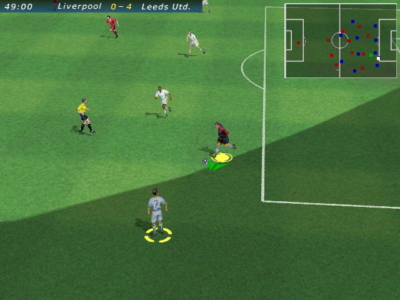
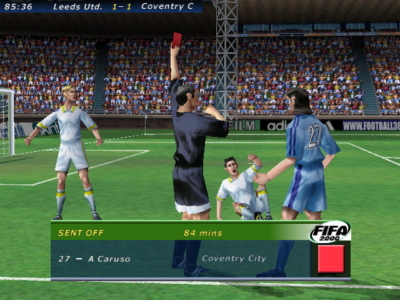
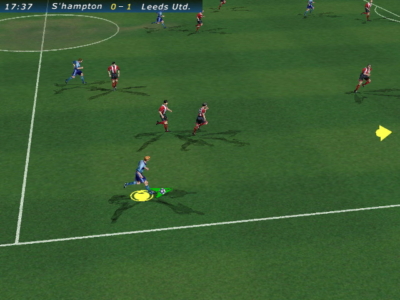
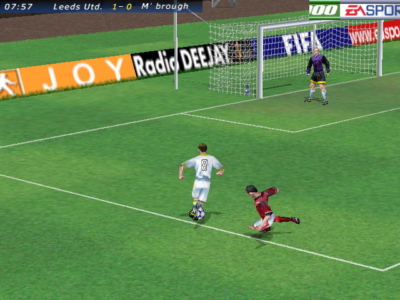

 Posts
Posts